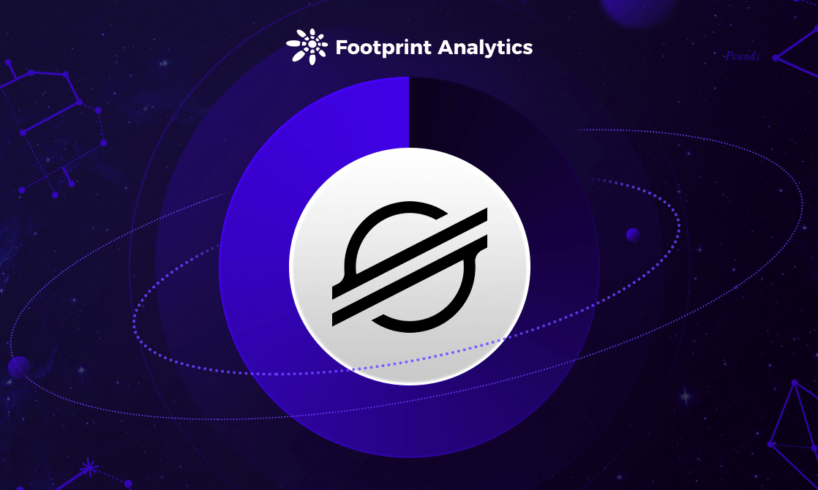
By [email protected] Analytics
Date: 8th January 2022
Data source: Stellar dashboard
Last month, the Stellar Development Foundation (SDF) participated in a cryptocurrency hearing hosted by the U.S. House Committee on Financial Services.
CEO Denelle Dixon presented the technology of the Stellar decentralized payment system and its applications. With the recent news that Ukraine and Mexico will be using Stellar to run their digital currencies, Stellar is once again in the spotlight.
What is Stellar
Launched in 2014, Stellar is a platform that supports cross-border transactions between currency pairs and aims to solve global payments problems through blockchain technology.
The global payments and settlement system are complicated with various fiat currencies and each country’s financial and regulatory systems.
Stellar aims to solve this problem by making transfers between different currencies efficient (within 5 seconds) and low cost (under 1 cent USD) through decentralized transaction validation.
The current status of Stellar
In its seven years of development, Stellar used to have an illustrious history.
It was once a top 10 blockchain project in terms of Market Cap. And even set a record for a 100x increase in token price before DeFi Summer.
Unlike projects in the crypto world, Stellar has built many partnerships with the traditional financial community, including IBM and national financial institutions.
Footprint Analytics – XLM Price
However, according to Footprint Analytics, Stellar is currently growing slowly.
After years of growth, it has a TVL of around US$1.5 billion to date, ranking it 40th among public chains, and this rate is far less than that of the up-and-coming public chains that are just starting.
Footprint Analytics – Stellar TVL
Stellar’s ecosystem is highly underdeveloped, with only two projects at present and very homogeneous.
Footprint Analytics -Protocols TVL in Stellar
Reasons for Stellar’s Slow Growth
Poor Ecosystem Incentives
At the time of Stellar’s creation, an inflation mechanism was set up to prevent a reduction in the circulation of XLM.
Each year the inflation scheme generates tokens equal to 1% of Stellar’s total supply and accounts for more than 0.05% of Stellar’s total share receiving additional XLM coins.
The purpose of the inflatable mechanism is to incentivize. However, analysis by Coinmetrics shows that 98% of the XLM incremental coins went to the SDF (Stellar Development Foundation) and did not benefit the Stellar project.
One reason for this is that the foundation has been involved since the early days and therefore can participate in the annual distribution of newly generated tokens.
The second reason is that most Stellar participants joined during the 2017 burst and are speculative users with little involvement in the ecosystem.
XLM inflation CoinMetrics
The Omission of SDF
The foundation holds a large number of tokens due to inflationary mechanisms. However, the foundation has failed to use these tokens to help the project function better. Crypto Slate analysts stated in 2019 that the foundation has only consumed $40,000 for community projects. Having a large amount of money but not using it well maps out the inaction of the foundation.
In 2019, the Stellar Development Foundation initially mitigated the token mismatch by ending its inflation plan and destroying more than 50% of its tokens. However, XLM still needs to expand its usage scenario.
The Road Ahead for Stellar
Although Stellar ended up lagging since its launch, it is set to make a comeback from 2021.
With the explosion of DeFi projects, multi-currency, cross-chain transfers are a current blockchain pain point, and Stellar offers one of the solutions that define a new standard for global payments.
Stellar has gained market recognition through expanded payment companies, national banks, financial institutions, and more, gaining recognition from multiple parties and several strong partners as a global solution for cross-border payments.
EVM Compatibility
The incompatibility of Stellar contracts with EVM means that developers cannot quickly deploy projects on Ethereum to Stellar in February 2021.
FlareNetworks has announced the integration of Stellar Lumens (XLM) with its smart contract platform, thus enabling compatibility with the Ethereum blockchain. If successfully landed, Stellar will be even more scalable.
Summary
Stellar’s recent moves show that it continues to interface with the financial community and bridge the gap between traditional and on-chain payments.
We can keep an eye on Stellar and look forward to its continued development in solving global payments challenges.
What is Footprint Analytics?
Footprint Analytics is an all-in-one analysis platform to visualize blockchain data and discover insights. It cleans and integrates on-chain data so users of any experience level can quickly start researching tokens, projects and protocols. With over a thousand dashboard templates plus a drag-and-drop interface, anyone can build their own customized charts in minutes. Uncover blockchain data and invest smarter with Footprint.
Footprint Website:https://www.footprint.network/
Discord:https://discord.gg/3HYaR6USM7
Twitter: https://twitter.com/Footprint_DeFi
Youtube: https://www.youtube.com/channel/UCKwZbKyuhWveetGhZcNtSTg
Posted In: Stellar, Analysis
CryptoSlate Newsletter
Featuring a summary of the most important daily stories in the world of crypto, DeFi, NFTs and more.
Get an edge on the cryptoasset market
Access more crypto insights and context in every article as a paid member of CryptoSlate Edge.
On-chain analysis
Price snapshots
More context
Join now for $19/month Explore all benefits
Source















